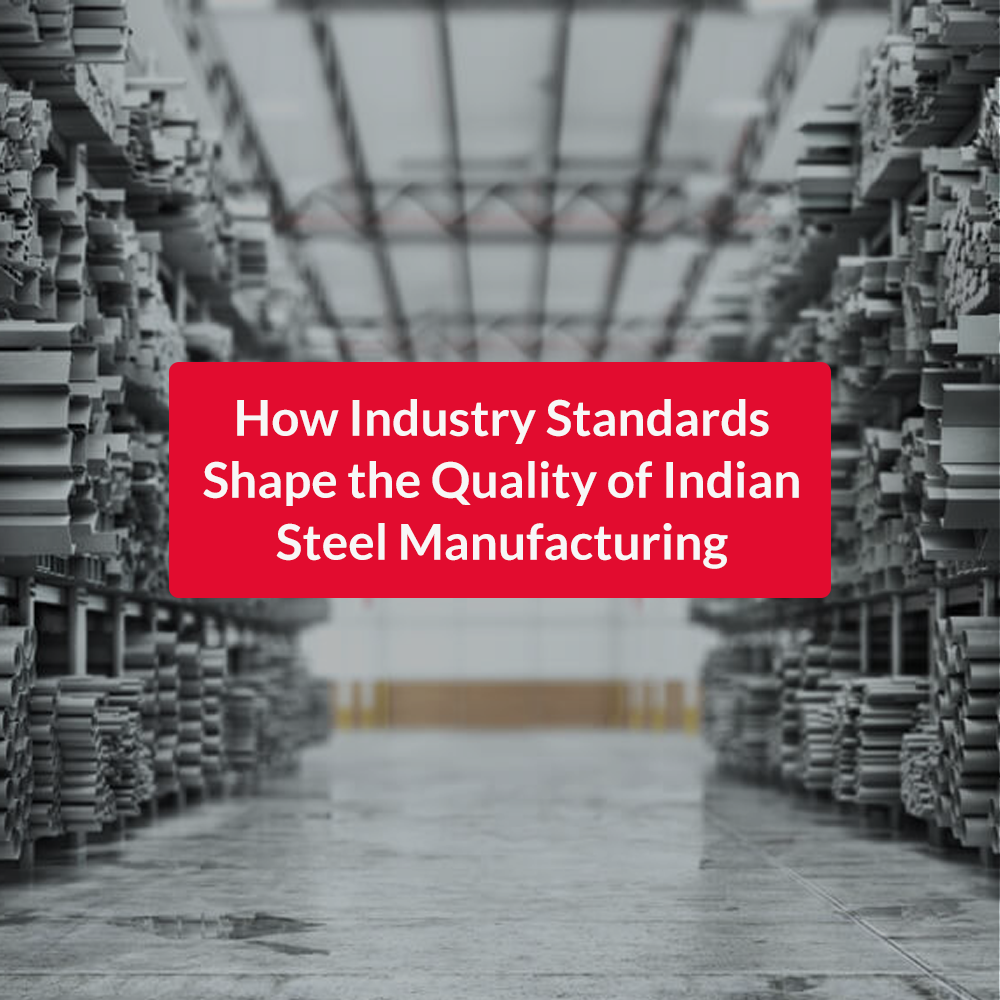Steel is one of the most critical materials used across industries such as construction, automotive, infrastructure, and manufacturing. In India, steel production is a pillar of economic growth, contributing to the country’s position as one of the world’s top steel producers. But what ensures the consistency, reliability, and safety of Indian steel products? The answer lies in industry standards that regulate every aspect of steel manufacturing.
This blog will explore how these standards shape the quality of Indian steel, ensuring it meets global benchmarks while contributing to the nation's industrial and economic advancement.
1. The Role of Industry Standards in Steel Manufacturing
Industry standards serve as guidelines that regulate the quality, safety, and efficiency of steel production. In India, several national and international bodies, such as the Bureau of Indian Standards (BIS), International Organization for Standardization (ISO), and American Society for Testing and Materials (ASTM), govern these standards.
By ensuring steel manufacturers follow these guidelines, standards help:
- Maintain Uniformity: Industry standards create a uniform quality of steel across different manufacturers, allowing consumers to trust the material’s properties regardless of its origin.
- Improve Safety: By regulating chemical composition, tensile strength, and heat resistance, standards ensure steel products perform reliably under stress and adverse conditions.
- Enhance Durability: Standards help manufacturers produce steel that is more durable and resistant to wear and tear, leading to longer-lasting structures and components.
- Foster Innovation: Following set standards pushes manufacturers to innovate while maintaining compliance, enabling the development of stronger, lighter, and more cost-efficient steel products.
2. Key Standards Shaping Indian Steel Quality
Bureau of Indian Standards (BIS)
BIS plays a crucial role in regulating the Indian steel industry through its certification schemes. It has developed various IS codes, like IS 2062, which covers structural steel specifications. By adhering to these codes, manufacturers ensure that their steel is fit for use in critical sectors like infrastructure, energy, and transportation.
ISO 9001
Steel manufacturers in India often aim for ISO 9001 certification, which is a globally recognized standard for quality management systems. It ensures that companies consistently meet customer and regulatory requirements, contributing to better product quality and customer satisfaction.
American Society for Testing and Materials (ASTM)
Though ASTM is a U.S.-based organization, many Indian steel companies adopt ASTM standards, especially for products aimed at the global market. ASTM A36, for example, covers the specification of carbon structural steel and is widely used in Indian steel manufacturing for construction and industrial purposes.
3. The Impact of Standards on Indian Steel Quality
Consistency Across the Supply Chain
Industry standards ensure that steel produced in different parts of India adheres to the same quality norms. This consistency is vital for large-scale projects that rely on steel from multiple suppliers. A builder or manufacturer can trust that steel sourced from different mills will perform uniformly, reducing the risk of structural failure.
Boosting Competitiveness
By following international standards like ISO or ASTM, Indian steel manufacturers are able to compete globally. High-quality, standardized steel is more likely to be exported, helping Indian companies access new markets and contribute to the country's export earnings.
Sustainability and Eco-Friendliness
Sustainability is becoming increasingly important in steel manufacturing, and industry standards help drive environmental responsibility. Indian companies are now following guidelines that minimize waste, reduce carbon footprints, and encourage recycling within the production process. Standards like ISO 14001, which covers environmental management, are guiding the Indian steel industry towards greener practices.
4. Challenges and the Way Forward
Despite the clear benefits, Indian steel manufacturers still face several challenges in consistently adhering to these standards:
- Cost of Compliance: Small and medium-sized enterprises (SMEs) may struggle with the cost of certification and compliance with stringent quality norms, which could hinder their growth.
- Technological Upgradation: Implementing advanced technologies to meet international standards can be expensive and technically challenging for some manufacturers, especially those operating in older plants.
- Global Competition: While Indian steel quality is improving, manufacturers still face stiff competition from countries like China and South Korea, which have invested heavily in cutting-edge production technology.
To overcome these challenges, Indian steel manufacturers need to invest in technology upgrades, training for quality management, and better integration of industry standards into their operations.
Conclusion
Industry standards are the backbone of quality assurance in Indian steel manufacturing. By ensuring uniformity, safety, and sustainability, these standards help Indian steel products meet both domestic and global demands. As the industry grows, adherence to these standards will remain crucial in maintaining India’s competitive edge in the global steel market.
Moving forward, the continuous adoption of newer, more stringent standards will not only enhance the quality of Indian steel but also support the country's ambitions of becoming a global manufacturing hub.
By following and implementing industry standards, the Indian steel industry can remain a powerhouse of strength, durability, and quality, contributing to nation-building in more ways than one.

